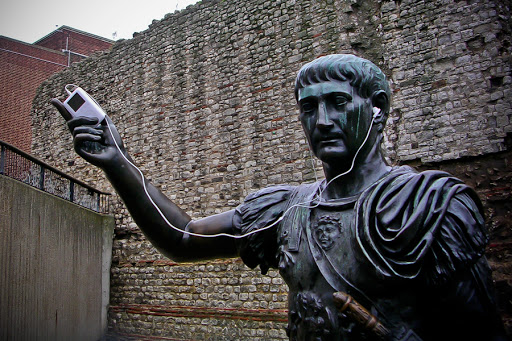A recent commentator on an Aleteia article wrote:
His comments reflect confusion over historical data. One reason for confusing historical data is that we have a tendency to presume that first century Judaism was monolithic – that everyone shared the exact same worldview, that they all followed God in the same way. Understanding the Sadducees is helpful both in seeing the diversity within Judaism at the time of Jesus and the Christian understanding of the resurrection.
Throughout much of their history, the Jewish people faced a choice: how does one remain loyal to God when the Jewish way of life is subject to pagan influence or rule? These are questions that Christians ask today. The majority of Israel under Roman Rule believed that God would intervene in history; that Israel’s fate was not simply in human hands. They believed that this Divine intervention would include a resurrection of the dead – a vindication of the faithful against pagan tyranny. The Sadducees differed from many of their contemporaries in how they understood God’s role in saving his people. They had a practical belief of those in power, that God helps those who help themselves. (N.T. Wright, The New Testament and the People of God, 211)
The Sadducees arose sometime during the Maccabean period and disappeared around the time of Jerusalem’s destruction. It is difficult to offer a description of their beliefs and practices because we do not possess any written records from the Sadducees, no personal description of their beliefs and practices. Nonetheless, there are multiple sources that speak of their existence in the first century. These sources include the New Testament, Josephus, and some rabbinic texts. These sources, while often hostile towards the Sadducees, do offer a consistent picture of the Sadducees. They show the Sadducees connected to the high priesthood, possessing differing view of the afterlife, and holding different understandings of certain laws.
Their earliest mention occurs in Josephus’s account (Ant. 13.293–299) of John Hyrcanus (160–143 BC). It is likely that the Hasmonean Dynasty, the heirs of the Maccabean revolt, formed a political alliance with the Sadducees. The Hasmoneans sought to consolidate the power of both the kingship and the high priesthood. Cooperation with the Sadducees offered the Hasmonean dynasty some legitimacy for their seizure of the high priesthood, while the Sadducees gained political influence and power. (Cf. Rudolph Myer, “Sadducees” TDNT 7) However, during the rule of Queen Salome Alexandra (76–69 BC) – a Hasmonian monarch who, as a woman, could not take the role of high priest – support was given to the Pharisee party, which greatly diminished and endangered the Sadducees. (Cf. Josephus, J.W. 1.5.1–3; Ant. 13.15.5–13.16.6.) After Queen Salome’s death, the country fell into a chaotic period as her two sons, Hyrcanus II and Aristobulus II (along with the latter’s son, Antigonus) vied for power. This chaotic period ended in 37 BC when Herod the Great, supported by the Romans, seized control and established himself as King. Herod appointed his own high priests whose families came from Babylon and Egypt – high priests who were more favorable to his and to Roman rule. This effectively destroyed the political power of the Sadducees.
After Herod’s death in 4 BC and the replacement of his son Archelaus with direct Roman rule, the Sadducees regained some political influence. The Roman procurators allowed the high priest to run the day to day affairs of Jerusalem, as long as public order was maintained. The high priest in turn relied on the priestly and lay aristocracy to accomplish his tasks. Significantly, several high priests during this period were known to be Sadducees, but none were ever said to be Pharisees. (Cf. J.P. Meier,
A Marginal Jew v. 3, 393)
The Sadducees have only one major appearance in the Gospels, and it concerns the issue of the resurrection (Mk 12:18; Lk 20:27; Matt 22:23). Matthew includes them in two other narratives (Matt 3:7 and 16:1–12), but they are presented as part of the larger opposition to Jesus. In the Acts of the Apostles, they are again primarily concerned with the question of resurrection (Acts 4:2; 23:6–8). They are said to be the party of the high priest (Acts 5:17), and we are also informed that they were represented in the Sanhedrin (Acts 23:6).
The limited appearance in the New Testament reflects what multiple other sources attest to – the Sadducees were a small group of aristocratic Jews, whose core group drew from traditional high priestly families and whose influence was primarily limited to Jerusalem and the Temple during the time of Jesus’ mission. Their connection to the Temple legitimized the status and power they were given under Roman rule. It also made them natural religious conservatives. As conservatives, they rejected the elevation of innovative traditions that were outside the Torah, particularly those traditions of the Pharisees. They also rejected the resurrection (Josephus, War, 2.165; Ant. 13.173). Their rejection of the resurrection could be traced to their conservative nature and to their politics. They seemed to be concerned about maintaining their power in the present and therefore were probably less interested in the issues of the afterlife and God’s vindication of the poor and oppressed. (N.T. Wright, The New Testament and the People of God, 212)
Common to most Jews in the first century, they resisted the Platonic idea that an individual disembodied intellect or spirit could be saved from its corruptible and corrupting body. Judaism held that creation was fundamentally good. The world was not something to be abandoned but to be treasured and saved. The question was: How? Christ offers a renewal of creation and a restoration of humanity that surpasses the effects of death. Therefore, in the fullness of our humanity – body and soul – we are able to worship God.

